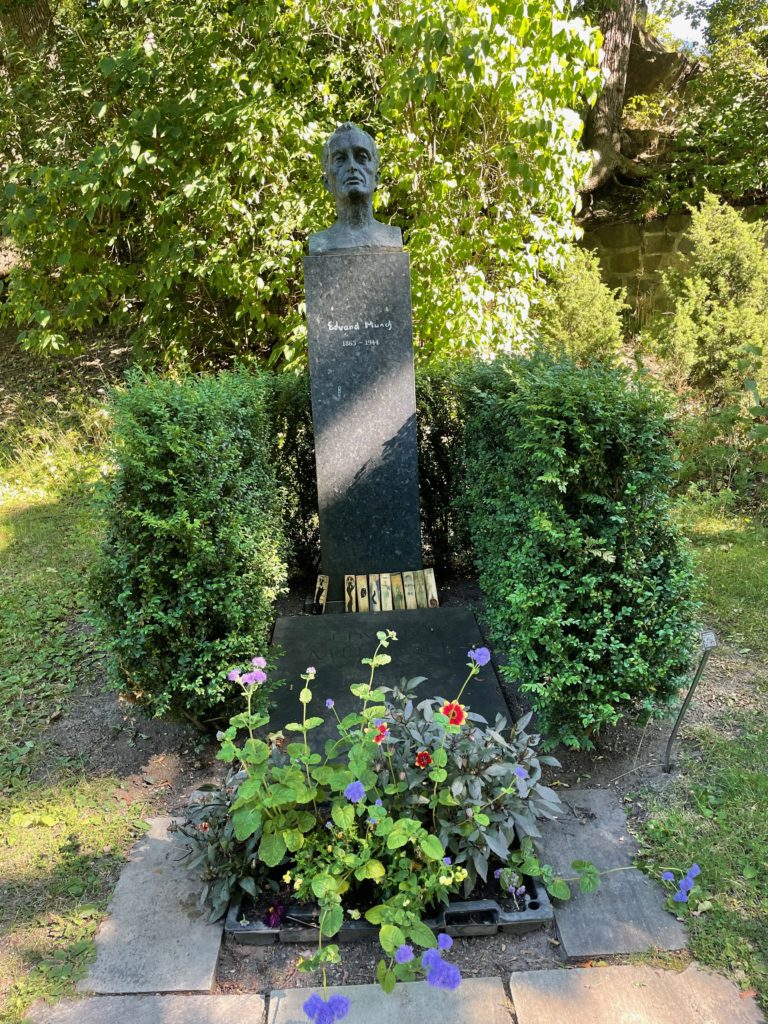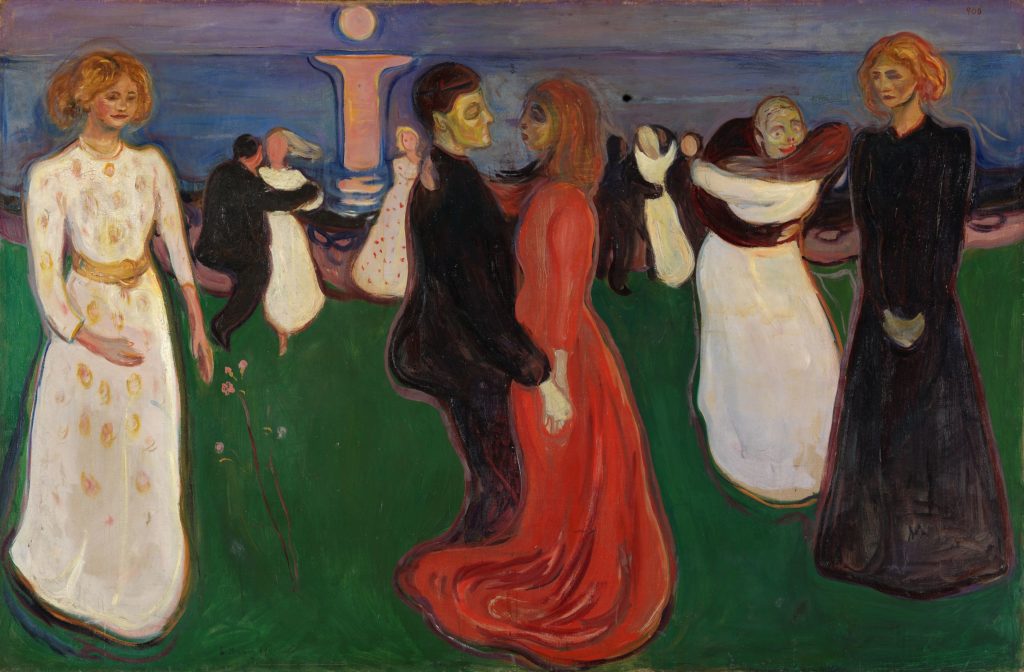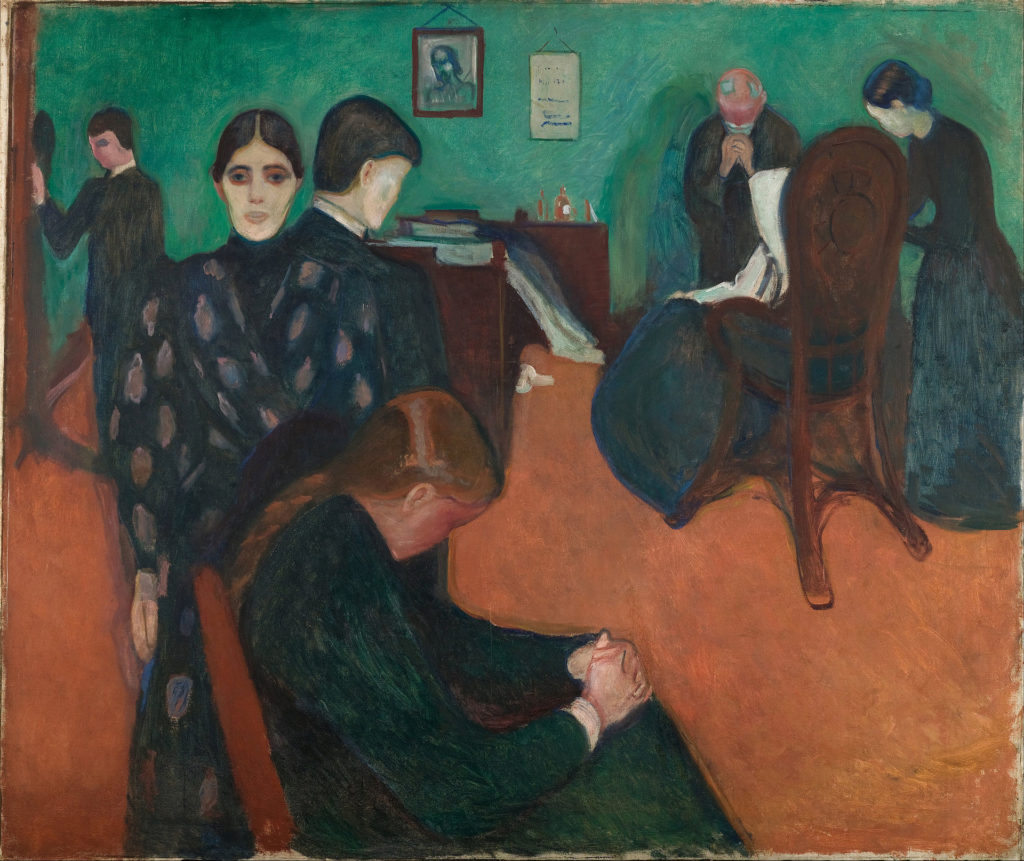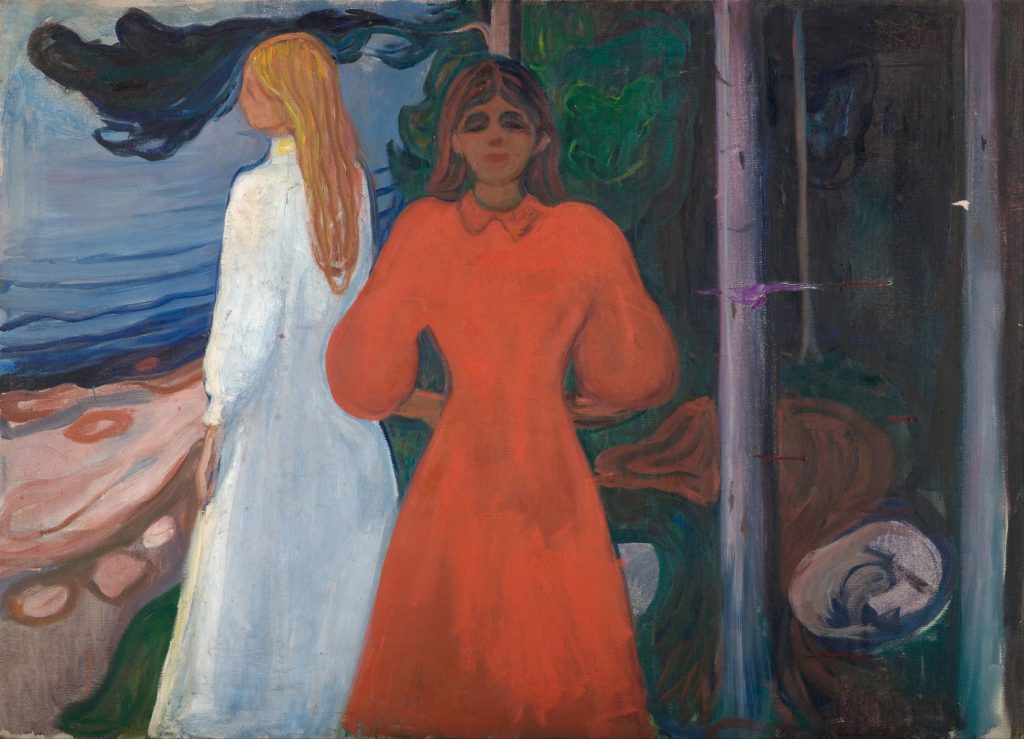Erik Visits an (Non) American Grave, Part 1,256
This is the grave of Edvard Munch.

Born in 1864 in Loten, Norway, near the Swedish border, Munch grew up genteel but poor, the son of a military doctor. His father was a religious fanatic and this deeply affected the boy. Fanaticism would be a major theme in his art.
I don’t suppose there’s that much of a reason to do a full biography here. What matters is the art. Munch was deeply influenced by modern art, which his father hated, and they clashed constantly. He associated with political radicals, though was more a bohemian type deeply invested in personal expression, which moved him away from his initial interest in impressionism. He started displaying his work in the mid 1880s and by the early 1890s had developed his personal style. Already he was interested in displaying madness. By this time he was living in Berlin to develop said style and to get away from staid, conservative Oslo.
There are a few versions of The Scream, the first from 1893 and the most valuable from 1895, but this sort of thing made him very famous. He had a major exhibition in Berlin in 1893 and moved to Paris in 1896, where he was one of the most important artists working. Munch himself was freaked out that he was going mad and maybe he was from time to time, but he had some bad habits too, including massive drinking and a propensity to get into bar brawls. But he continued working, largely supported by German patrons, particularly in the nation’s wealthy Jewish community. He was pretty nonpolitical and largely stayed out of World War I-based issues, though he did love France. He moved back to Norway in the 20s and mostly lived in isolation, where he continued to work and paint a lot of portraits of his friends. Unlike his fellow famous Norwegian artist Knut Hamsun, Munch was horrified by the Nazis. He was one of the degenerates for him and so most of his work went into hiding during the war, though around 10 paintings were permanently lost.
Later in life, Munch’s health was failing and unfortunately he did not survive the Nazis. He died in Oslo in 1944, at the age of 80.
This is an extremely sketchy overview of Munch’s life, but again, the point is the art, so let’s look at a bunch of it.









Just an amazing artist.
Also, Oslo has spent a ton of money on redoing its waterfront and the Munch Museum recently opened. It’s a pretty impressive multi-story building based around different aspects of his art, including images of his work soundtracked by a metal band, which is about the most 21st European thing ever. It’s a very good museum and you should go if you can.
Edvard Munch is buried in Our Savior’s Cemetery, Oslo, Norway.
If you would like this series to visit some great American artists from the turn of the twentieth century, you can donate to cover the required expenses here. Cecilia Beaux is in Bala Cynwyd, Pennsylvania and William Merritt Chase is in Brooklyn. Previous posts in this series are archived here.


